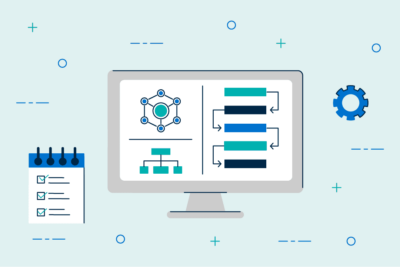3 reasons to build financial dashboards for academic leaders—and what metrics to include
Central finance leaders are increasingly sharing unit-level dashboards with academic leaders to drive financial data fluency and adoption. Dashboards help academic leaders understand unit financial performance by visualizing KPI trends. Academic leaders use dashboard data to optimize ongoing resource allocation decisions.
Institutions with mature business intelligence (BI) infrastructure have automated dashboard creation in self-service portals. Understandably, self-service reporting is the end-goal that central business and IT teams are working toward. But finance leaders do not need access to sophisticated BI tools and staff to achieve the benefits of academic dashboards. Manual dashboards (i.e., created as PowerPoint presentations or PDFs by central finance) are still effective. Specifically, leaders should consider building manual dashboards for three reasons:
1. You may not have the infrastructure to support self-service BI for another 5-10 years.
Many institutions may need another decade to build the BI teams and invest in data tools to support self-service systems. You can’t wait that long to drive better academic resource stewardship. In the meantime, manual dashboards provide academic leaders with the financial data they need to monitor unit financial health.
2. Manual dashboards provide the foundation metrics and data visualizations for future self-service platforms.
You can port over the metrics and layout of manual reports to self-service portals. Getting these metrics right now makes BI portal construction less time- and labor-intensive down the road.
3. Manual dashboards drive staff data fluency and adoption.
Building data adoption now drives unit leaders to use self-service tools in the future.
Components of an academic financial dashboard
You don’t need to start from scratch to build your own academic financial dashboards. We evaluated several dashboards and compiled a list of commonly used metrics. Simply put, most dashboards highlight year-to-date expenditures and projected revenues. Expenditures often take up the most real estate, since academic leaders can more immediately influence spending decisions, particularly faculty salaries.
Consult the sample metrics list below for data points to include in your dashboards.
Recommended Academic Financial Dashboard Metrics
- Year-to-date budget vs. actuals and actuals for 1-2 previous fiscal years, current year budget, current year forecast, and upcoming year budget by expense category. Same expense categories:
- Faculty, staff, and student salaries and benefits
- Undergraduate and graduate tuition, financial aid, and discount rate
- Advertising and communications, hospitality, contracts, travel
- Sponsored projects, restricted gifts, endowment distribution investment income, and auxiliary revenue
- Supplies, services, facilities, maintenance and operating costs
- Internal transfers
- Year-to-date budget vs. actuals by cost center (Sample expense categories same as above)
- Salary actuals by month by salary type and funding source, compared to prior years, upcoming year budget, and current year forecast
- Operating expense line-item detail for current year budget forecast, including variance calculation
- Line-item detail for supplies, services, facilities, and operating costs
- If applicable, separate budget vs. actuals report for auxiliaries and centers within units
- List of year-to-date budget adjustments
- List of all open purchase orders
- Preview of budget proposal for upcoming year
- Anticipated RCM results and unspent funds that will rollover (if using an activity-based budget model)
Manual dashboards are most impactful when CBOs discuss them at regular meetings with academic leaders. At these meetings, academic leaders can clarify how to interpret different metrics. At the same time, central finance can advise unit leaders on how to incorporate this data into their decision-making.
Looking for more academic financial dashboard inspiration? View the University of California, Berkeley’s website for Cal Answers, an online self-service dashboard portal.
Use dashboards to inform executive-level decisions, too
All institutions should consider using academic financial dashboards to push information out to academic leaders. Of course, it’s equally important to push financial information up to boards and legislatures. For sample executive-level dashboards to emulate, see our study on Impactful Financial Dashboards. Download the study.
More resources on financial dashboards

Board-Level Dashboards

Create a Compelling Facilities Dashboard

Impactful Financial Dashboards
